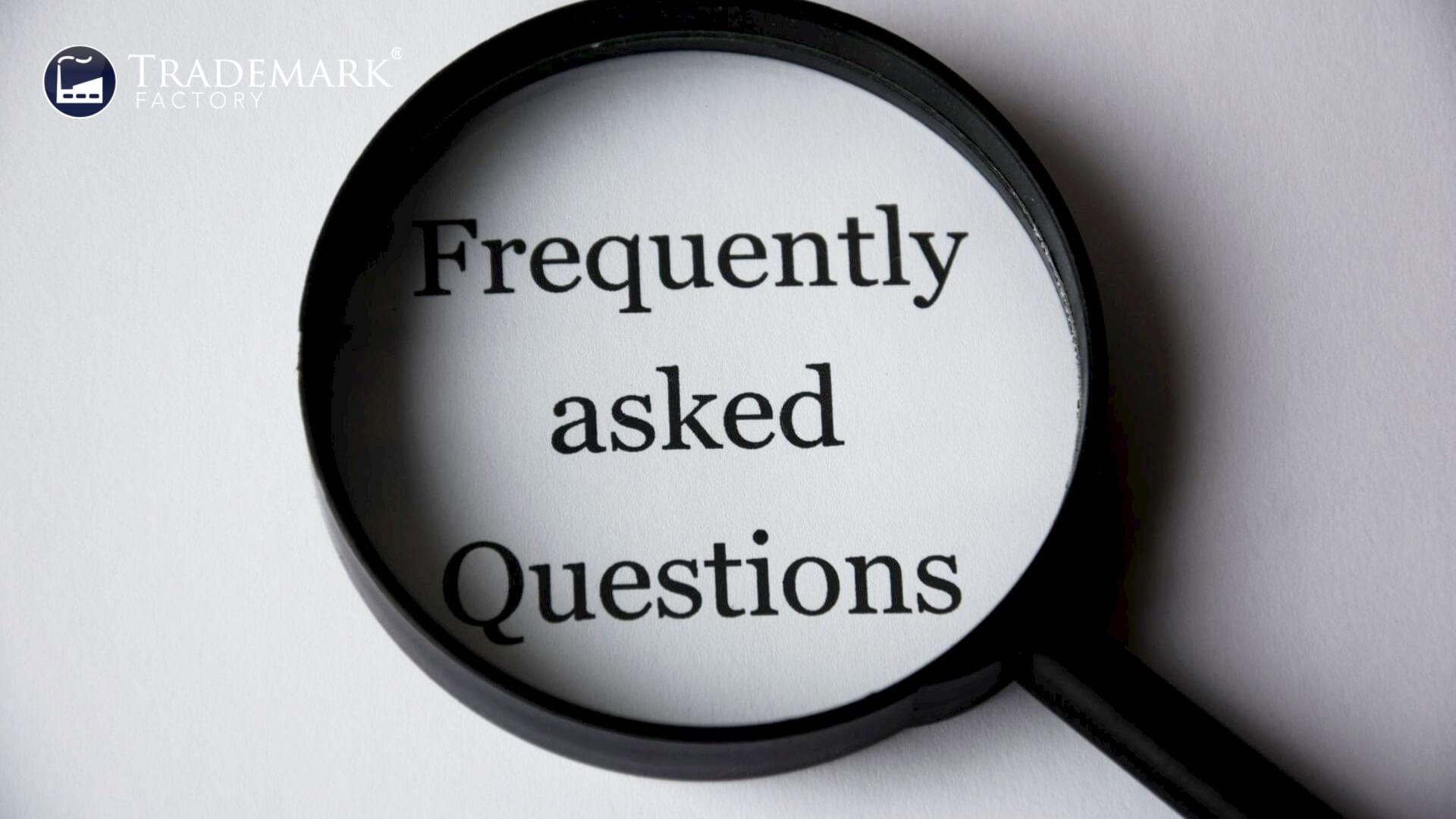Choosing the Right Trademark Class Full Guide

In the contemporary business landscape, establishing a strong brand identity is of paramount importance for enterprises striving to thrive and maintain a competitive edge. One indispensable aspect of crafting this unique identity is securing one's intellectual property through trademarks, which not only protect the distinctiveness of goods and services but also fortify consumer trust in the same. Consequently, understanding trademark classes becomes crucial for entrepreneurs and businesses to maneuver through the intricate legal framework surrounding trademark registration while ensuring comprehensive protection in their respective industries.
Trademark classes are essentially categories that classify goods and services according to their nature or purpose, providing a systematic approach to safeguarding intellectual property rights. Trademark definition and trademark introduction includes the classification system stems from the International Classification of Goods and Services under the Nice Agreement, which comprises 45 distinctive classes spanning myriad industries. An awareness of these classes enables businesses to accurately determine the appropriate class or classes applicable to their products or services, thereby maximizing legal protection while mitigating potential disputes arising from overlapping claims on similar trademarks. In essence, trademark classes serve as an indispensable tool for empowering businesses in navigating the complexities of intellectual property law while fostering a sense of belonging within their targeted market segments.
Introduction to Trademark Classes

The categorization of intellectual property protection plays a crucial role in safeguarding a company's brand identity and ensuring successful commercial endeavors. Trademark benefits extend beyond merely securing the exclusive rights to use a particular mark, as they also facilitate the differentiation of goods and services offered by various businesses. This prevents class confusion among consumers and enables companies to establish a strong presence within their respective markets. Being well-versed with the intricacies of trademark classes is indispensable for organizations seeking to effectively protect their valuable assets, maintain consumer trust, and foster long-term growth. With this in mind, it is important that businesses delve into understanding the basics of trademark classes, which will be explored in greater detail in the following sections.
Understanding the Basics of Trademark Classes

A comprehensive grasp of the categorization system for distinguishing and organizing intellectual property rights provides a solid foundation for navigating the complexities of trademark registration and protection. Trademark classes basics include an understanding of class distinctions, which are essential in streamlining the registration process, addressing infringement issues, and managing international trademarks effectively. The classification system comprises 45 distinct classes that encompass goods and services, thereby assisting businesses in safeguarding their products or offerings from potential infringement while also facilitating a more efficient filing procedure across multiple jurisdictions. By comprehending these class distinctions, applicants can ensure accurate representation of their goods or services within the global marketplace as well as mitigate any possible conflicts arising from unauthorized use or imitation. This foundational knowledge thus sets the stage for a more in-depth exploration into the importance of trademark classes in protecting intellectual property within diverse industries and sectors worldwide.
Importance of Trademark Classes in Protecting Intellectual Property

Meticulous selection of the appropriate categories plays a crucial role in safeguarding one's intellectual property and ensuring robust protection against potential infringements. Trademark classes importance is evident as it provides legal exclusivity to use certain words, phrases, symbols, or designs that uniquely identify and distinguish a company's products or services from those of others. When properly classified, trademarks can prevent competitors from misusing similar marks in the same class; hence avoiding class conflicts that could dilute the brand's distinctiveness. Furthermore, accurate classification helps trademark owners monitor and enforce their rights more effectively by focusing on relevant industries where infringement is likely to occur. As such, precise identification of suitable classes not only fortifies an organization's intellectual property portfolio but also facilitates strategic market positioning while minimizing potential risks associated with unauthorized usage. In light of these factors, it becomes imperative for businesses to carefully evaluate their offerings and diligently select the most fitting trademark classes, which will be further discussed in the following section addressing how to choose the right trademark class for your business without using 'step' as a transition word.
How to Choose the Right Trademark Class for Your Business

Delving into the process of determining the most suitable category for your intellectual property protection, it is imperative to examine various factors that contribute to prudent decision-making and bolster an organization's strategic positioning in the market. A well-thought-out choosing trademark class selection strategy can not only streamline the trademark registration process but also mitigate potential legal disputes arising from common classification mistakes. When navigating through international trademark classes, businesses must assess their unique product or service offerings and correlate them with the appropriate classification system to ensure adequate coverage in relevant jurisdictions. Furthermore, identifying any possible overlaps between business type correlation and desired intellectual property rights can greatly enhance a company's competitive advantage while safeguarding its brand reputation. To achieve this balance, expert advice on mitigating risks associated with misclassification should be sought before committing to a specific class. This groundwork will pave the way for a comprehensive understanding of different trademark classes and their categories, empowering businesses to make informed decisions that support long-term growth and success.
Overview of the Different Trademark Classes and Their Categories

Examining the diverse landscape of intellectual property categories, we will provide an in-depth analysis of various classification systems and their respective groupings to empower businesses with a solid foundation for informed decision-making. This examination serves to elucidate the complexities surrounding trademark classes overview and their inherent benefits while addressing potential class conflicts. In doing so, we present four critical factors: 1) The importance of accurate classification for brand protection; 2) Identifying similarities and differences between categories within each class; 3) Assessing overlapping goods or services that may cause conflict across multiple classes; and 4) Understanding how proper classification contributes to effective enforcement against infringement. By delving into these aspects, businesses can navigate the intricate world of trademarks with confidence and secure their place in the market. As we transition into our subsequent discussion on specific classes, let us begin by examining trademark class 1, which encompasses chemicals and chemical products.
Trademark Class 1: Chemicals and Chemical Products

Exploring the realm of Trademark Class 1, we uncover a vast array of chemicals and chemical products, facilitating an understanding of the types of goods protected under this category and offering real-world examples to further illuminate the practical applications within this classification. Chemical innovation drives progress in various industries, leading to sustainable products that benefit society as a whole. Examples include pharmaceutical advancements in medicine, agricultural chemicals that promote crop growth and protection, or cosmetic ingredients enhancing product quality and efficacy. Prominent trademarks registered under Class 1 encompass iconic brands such as Monsanto's Roundup herbicide, DuPont's Tyvek protective material, or Procter & Gamble's Tide laundry detergent. These diverse examples demonstrate how vital Class 1 is for safeguarding intellectual property rights while fostering industry growth and promoting consumer confidence in high-quality chemical products. As we delve deeper into trademark classifications, our exploration leads us to another significant category: Trademark Class 9 – Electrical and Scientific Apparatus.
Trademark Class 9: Electrical and Scientific Apparatus

Navigating the intricate realm of Trademark Class 9, we uncover an extensive assortment of electrical and scientific apparatus, shedding light on the diverse range of goods protected under this category and providing real-world examples to enhance our comprehension of its practical applications. Electrical inventions such as computers, software, smartphones, and various electronic devices are safeguarded within this class, ensuring gadget protection that is vital for creators in today's rapidly evolving technological landscape. Additionally, scientific innovations like laboratory equipment, optical instruments, and measuring devices also find their niche within Class 9's broad spectrum. Furthermore, digital trademarks encompassing downloadable software applications and multimedia content serve as prime examples of how technology patents have evolved to accommodate modern advances in electronic media and communication platforms. In conclusion, Class 9 epitomizes the dynamic nature of intellectual property rights as they adapt to protect contemporary advancements in both electrical devices and scientific developments while simultaneously fostering a sense of belonging among inventors who strive for recognition in these burgeoning fields. As we continue our exploration into trademark classifications with equal attentiveness to detail and nuance, we eagerly anticipate delving into the realm of 'trademark class 16: paper goods and printed matter', where a distinct yet equally fascinating array of products await our discovery.
Trademark Class 16: Paper Goods and Printed Matter

Delving into the domain of Trademark Class 16, an intriguing assortment of paper goods and printed matter emerges, encompassing a diverse range of products and offering valuable insights into the various types of commodities safeguarded under this particular classification. Such items include traditional print materials like books, newspapers, magazines, alongside eco-friendly stationery and sustainable packaging solutions that reflect contemporary concerns about environmental sustainability and paper recycling benefits. This class also extends to innovative print materials such as holograms, decals, adhesive labels for various purposes, and even certain types of art supplies. The proliferation of digital media has spurred debates over digital versus print mediums; however, Class 16 remains highly relevant in today's world due to its capacity to protect both conventional printed matter and cutting-edge advances in the industry. As we continue our exploration through trademark classes with an emphasis on fostering a sense of belonging among creative professionals seeking protection for their intellectual property rights, let us now turn our attention towards examining trademark class 25: clothing, footwear, and headgear.
Trademark Class 25: Clothing, Footwear, and Headgear

Transitioning from the realm of paper goods and printed matter, we now delve into the world of fashion, where trademark protection plays a pivotal role in distinguishing brands and their products. Trademark Class 25 encompasses clothing, footwear, and headgear, providing essential safeguards for businesses operating within this highly competitive industry. Fashion industry trademarks enable companies to uphold their brand identity and protect their designs from imitation or unauthorized use. Brand protection strategies are especially crucial in this sector due to the rapid pace of changing trends and constant introduction of new products.
- **Fashion industry trademarks**: Ensuring that unique designs and logos are protected from potential infringement.
- **Brand protection strategies**: Implementing measures to maintain exclusivity and prevent unauthorized use or replication of branded items.
- **International registrations**: Securing trademark rights across multiple jurisdictions as fashion brands often operate on a global scale.
- **Infringement consequences**: Understanding the legal ramifications of using another company's registered trademark without permission, which may result in severe financial penalties or reputational damage.
- **Unregistered trademarks**: Recognizing that even unregistered marks can be protected under common law if they have acquired distinctiveness through extensive use.
As we continue our exploration into various trademark classes, our next focus will be on Class 35, encompassing advertising and business services—a domain where brand recognition is equally vital for success.
Trademark Class 35: Advertising and Business Services

Exploring the realm of advertising and business services unveils the significance of safeguarding brand identity within this highly competitive domain, where success heavily relies on recognition and differentiation. Trademark strategies play a crucial role in achieving this objective, as they provide businesses with legal protection from copycats and prevent other entities from exploiting their reputation. Trademark Class 35 specifically covers an extensive range of services related to advertising, marketing, promotion, management, administration, office functions, retail services and more. However, businesses must be cautious when selecting the appropriate class for their trademark registration due to potential pitfalls such as class confusion.
**Trademark Class 35 Services**
**Real-World Examples**
Advertising
Google AdWords™
Business Management
McKinsey & Company™
Retail Services
Amazon Prime™
Business branding is essential for creating a unique identity that sets one apart from competitors in the market; thus registering trademarks under Class 35 allows companies to protect their logos, slogans or names associated with these services. Service protection is paramount because it helps maintain trustworthiness among customers while also preventing competitors from gaining unfair advantages through deceptive practices. In conclusion, understanding trademark classes such as Class 35 can help businesses secure their intellectual property rights effectively while avoiding advertising pitfalls stemming from class confusion or misregistrations. The exploration of intellectual property protection continues further into the domain of scientific and technological innovations with Trademark Class 42: Scientific and Technological Services and Research and Design Services.
Trademark Class 42: Scientific and Technological Services and Research and Design Services

Navigating the intricate landscape of scientific and technological advancements necessitates a robust framework for safeguarding intellectual property rights, which prominently encompasses research, design, and development services under Trademark Class 42. This class is pivotal in addressing misconceptions regarding trademark protection for technology service trademarks while providing a foundation to avoid infringement issues. Covering a wide array of domains such as software development, engineering consultancy, data analysis, and scientific testing services, Class 42 effectively addresses various challenges posed by the dynamic nature of modern scientific discoveries and technological innovations. The protection offered under this class helps businesses preserve their unique identity within the competitive market while ensuring that their valuable research service contributions remain secured against unauthorized use or imitation. Furthermore, understanding the precise scope of Class 42 is crucial for organizations seeking to establish a strong foothold within the realm of science and technology while fostering an environment where innovation thrives unhindered by legal ambiguities or potential disputes. In conclusion, mastering the intricacies of Class 42 offers immense benefits to both established entities and emerging pioneers in their pursuit to preserve their intellectual assets amidst an ever-evolving landscape driven by relentless curiosity and creative exploration.
Conclusion

In conclusion, effectively comprehending and utilizing the categorization system for intellectual property rights plays a pivotal role in safeguarding innovation while fostering a competitive marketplace. Trademark protection is essential to prevent unauthorized use of distinctive signs, logos, or names associated with products and services. Navigating through class challenges requires understanding the nuances of each class and making informed decisions about registration. Three key aspects to keep in mind when considering trademark classes are: 1) Ensure thorough research for identifying the correct class(es) that align with your products or services; 2) Regularly monitor developments within your industry and relevant classes to maintain up-to-date registrations; 3) Seek professional assistance if you encounter complexities during the registration process or disputes regarding trademarks. By adhering to these guidelines, businesses can protect their brand identity, enhance consumer trust, and foster a sense of belonging among their target audience. For those interested in delving deeper into trademark classes and intellectual property rights management, numerous resources are available online, including government websites offering comprehensive information on national and international classifications systems.
Frequently Asked Questions

How do I know if my product or service falls under multiple trademark classes, and how can I register for multiple classes?
Identifying the appropriate categorization of a product or service within the trademark classification system may present challenges, particularly in cases where Class Overlaps occur, leading to Class Confusion. To mitigate such issues and ensure accurate International Registration, comprehensive Trademark Research is vital. By examining precedents and guidelines provided by various jurisdictions' intellectual property offices, one can gain clarity on the most suitable class or classes for their specific offering. Registering under multiple classes may be necessary if the product or service encompasses elements from different categories; however, this approach may also reduce potential Class-Based Disputes that could arise from inadequate protection. Ultimately, understanding and effectively navigating the complexities of trademark classifications is crucial for securing proper rights and fostering a sense of belonging within one's respective industry.
What is the process for changing or updating the registered trademark class if my business evolves and expands into new product or service categories?
As businesses evolve and expand into new product or service categories, it is essential to ensure that their registered trademarks accurately reflect these changes. Trademark amendments and class updates can be achieved through a process of registration modifications, which involves reclassifying the existing trademark under the appropriate International classifications. This procedure not only safeguards the intellectual property rights of business owners but also promotes a sense of belonging among consumers by ensuring that products and services are consistently represented in the marketplace. Therefore, timely registration modifications are crucial for business expansion and maintaining a strong brand identity across various industries and markets.
How often do the trademark classes get updated or revised, and how can I stay informed about these changes?
Trademark updates and class revisions occur periodically to accommodate the ever-evolving landscape of goods and services in the global market. Staying informed about these changes is crucial for businesses seeking to protect their intellectual property and maintain a competitive edge, as it enables them to adapt their registration strategies accordingly. One must consider international differences in classification systems, as each jurisdiction may implement updates at varying frequencies or adopt unique revisions based on local market conditions. Engaging with specialized publications, participating in industry forums, and consulting with legal professionals can facilitate greater awareness of these developments within the intricate realm of trademark law, fostering a sense of belonging among businesses navigating this complex terrain together.
Are there any additional costs or fees associated with registering a trademark in multiple classes?
Undoubtedly, securing a comprehensive trademark protection is essential for businesses seeking to safeguard their brand identity in an increasingly competitive marketplace. In order to achieve this objective, many organizations opt for registering their trademarks under multiple classes, which can lead to additional costs due to class-based pricing structures implemented by registration authorities. Moreover, class overlap challenges may arise when determining the appropriate categories for particular goods or services, necessitating professional trademark classification advice from experts in the field. Streamlining registrations across various classes not only ensures adherence to legal requirements but also maximizes cost-effectiveness and efficiency in the long run. Therefore, it is crucial for businesses to carefully evaluate their trademark registration strategies while taking into account potential financial implications and available resources that can aid in protecting their brand identity comprehensively.
How do trademark classes differ across various countries or regions, and do I need to register my trademark separately for each jurisdiction?
International variations in trademark regulations result in significant class discrepancies and necessitate separate jurisdiction registrations to ensure cross border protection for businesses. Regional trademarks, though providing a degree of safeguard within a specific territory, may not extend the same level of legal coverage internationally due to differing classification systems and enforcement mechanisms. Consequently, enterprises seeking comprehensive global brand security must strategically evaluate their target markets and register their trademarks within each relevant jurisdiction, taking into account the unique characteristics and requirements of each country or region's trademark classification framework. In doing so, they can effectively mitigate potential infringement risks and foster a sense of belonging among consumers who perceive the brand as an integral part of their local market landscape.
Conclusion

In conclusion, the proper selection and understanding of trademark classes play a crucial role in safeguarding intellectual property rights. Businesses must carefully consider their goods and services to ensure accurate classification, thereby reinforcing legal protection, while also preventing confusion among consumers.
Furthermore, familiarizing oneself with specific trademark classes such as Clothing and Footwear (Class 25), Advertising and Business Services (Class 35), and Scientific and Technological Services (Class 42) can significantly benefit business owners in their quest for brand identity protection. A well-informed approach to trademarks ensures a strong foundation for successful ventures in today's competitive market landscape.
Subscribe to Trademark Wednesdays, our weekly newsletter where we'll send fun and informative trademarking topics straight to your inbox.




